Belfast: The Persistence of Memory
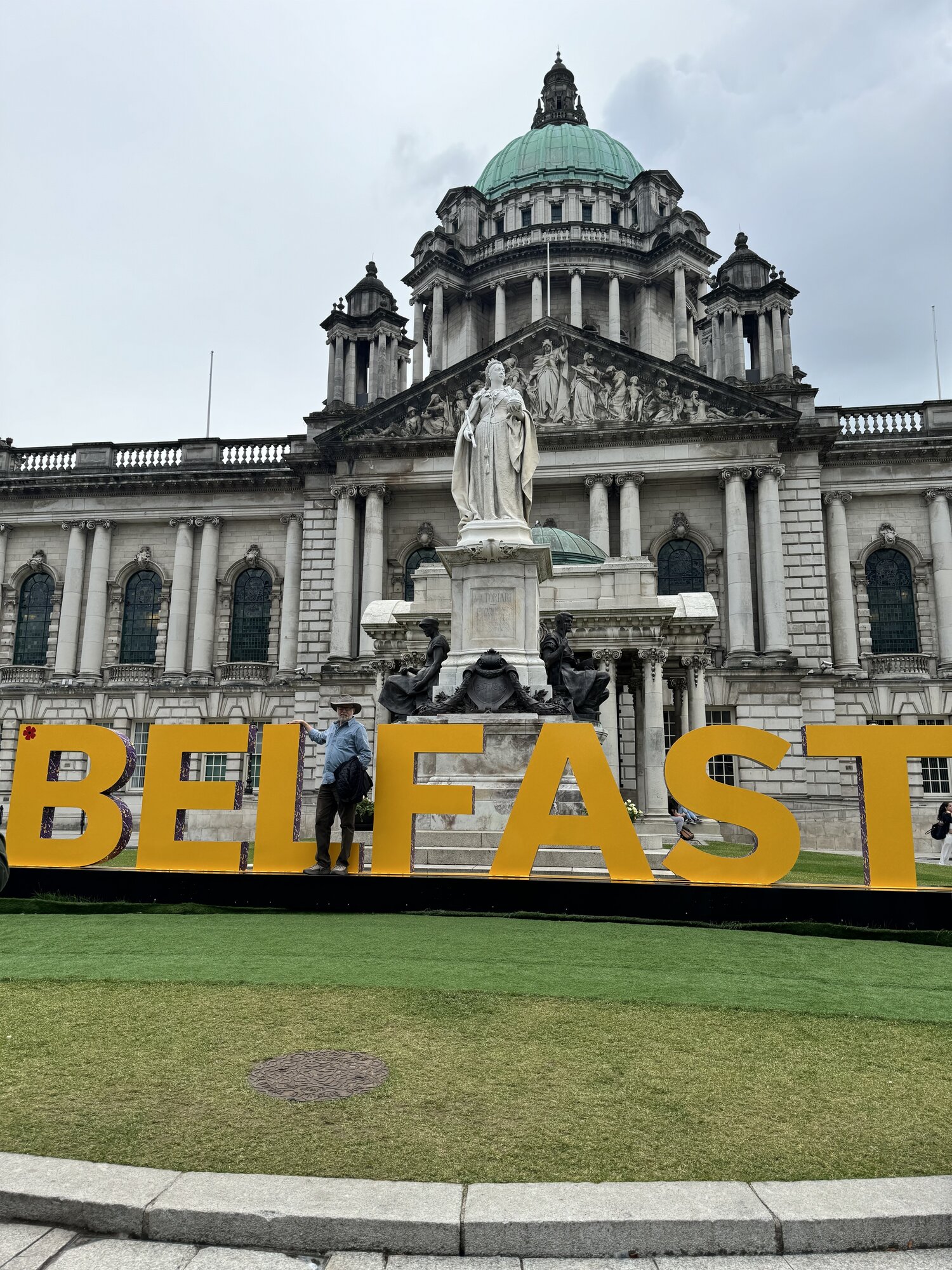
Well, we got to Belfast yesterday, July 11, and were thrown right into it. July 12 is a public holiday, an annual parade. The Orange Order (a Protestant fraternal organization and political society) and hundreds of marching bands parade across Northern Ireland to mark the Battle of the Boyne, when William of Orange - also known as King Billy - defeated King James II in 1690. Yes, 1690. And they are still fighting (or at least, thank goodness, just arguing) about it.
(It is also tied in somehow to the 1916 Battle of the Somme during WWI - don’t ask me exactly how - where the British and some French fought the German Empire along the river Somme in France. Intended to hasten a victory for the Allies, more than three million men fought in the battle, with more than one million either wounded or killed, making it one of the deadliest battles in all of human history.)
Gary Mason, a Methodist Minister and renowned peacemaker in Northern Ireland (and all over the world, these days) was our guide. And he showed us just how messy and complicated the conflict in Northern Ireland is. Not surprisingly, it has real parallels with the Middle East, where Gary has also done a lot of important work (more on that later). We also had the opportunity to spend delightful time with Dr. Steve Cherry, the Dean of Kings Chapel at the University of Cambridge, a theologian who has written extensively about the idea and nature of forgiveness.
The July 12 celebration is a protestant, British loyalist celebration; the Catholics stay away. The history is convoluted and complex. The crowd was in largely in orange (“William of Orange…”) kind of ironic for Valerie and I, because we just came form Holland where, to support their football team, everyone was wearing orange (Why? because that is the color of the Dutch royal family. And that is also why William of Orange is Orange - he was originally Dutch. In fact, he became King of England from his post as steward of cities in Holland, including Utrecht.)
 The venerable William of Orange
The venerable William of Orange
So, it started at midnight Thursday, where in a big empty parking lot a number of men (seemed mostly in their 20s) were building a massive pyre of wooden pallets. Massive. Then, at exactly midnight, they set it ablaze.
 That tiny figure at the top left under the flag is a guy, to give you some sense of scale.
That tiny figure at the top left under the flag is a guy, to give you some sense of scale.
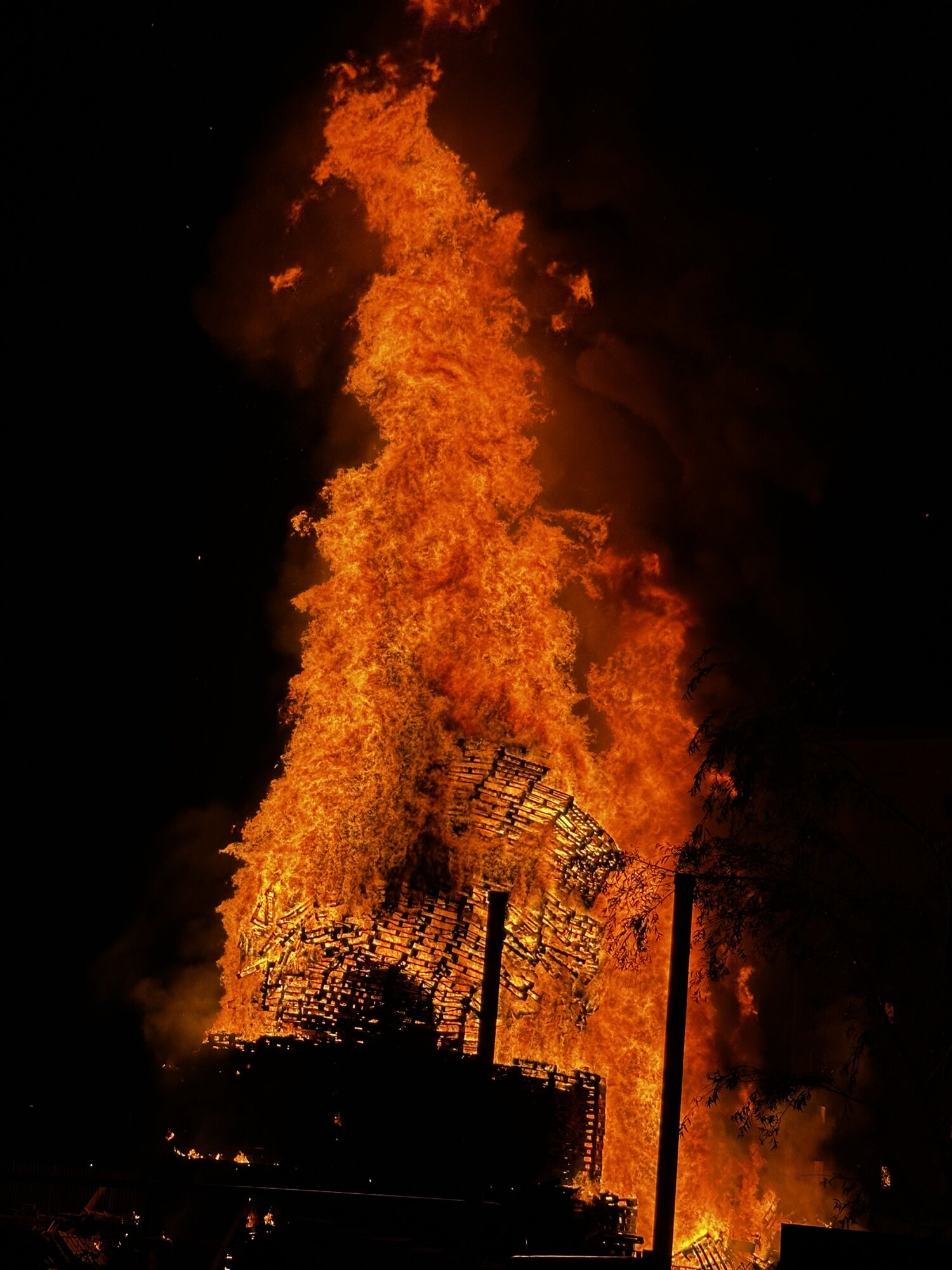 The fire was so hot we had to keep moving back, even a block away you could feel it.
The fire was so hot we had to keep moving back, even a block away you could feel it.
Belfast has managed its conflict. The tension is still there, and memory is persistent. Imagine in your city a bunch of guys commandeering a parking lot, building a giant pyre out of wooden shipping palettes, and then setting the whole thing ablaze, with nary a policeman in sight. But the police have a troubled history with the good citizens of Belfast.
You feel the tension between the loyalists and the nationalists - between those who are for remaining part of Britain and those who want Northern Ireland reunited with Ireland - permiates the atmosphere here, it is never far from the surface. At the parade on Friday, entirely dedicated to the unionists and loyalists, there was not a Catholic or nationalist in sight. But there were also no protests or violence. Belfast has reached some kind of equilibrium, without sacrificing belief, or memory.
 A young loyalist watching the parade.
A young loyalist watching the parade.
But the parade was, well, weird. It consisted of hundreds of marching bands (in just the one in Belfast; there are over 500 other parades around Northern Ireland on July 12). But while each had a slightly different uniform, otherwise all of them - the parade went by for close to two hours - were almost exactly the same. First, a few young kids twirling batons and tossing them in the air (and all the batons were identical). Then a person with a long ceremonial mace leads the way, then a banner, some of them quite beautiful and richly illustrated. Then follows - in every case - a large groups of drums (with one bass drummer in the middle wailing away at the thing), then maybe two or three cymbal bangers, and then a fleet of men (almost all men) playing the Irish flute.
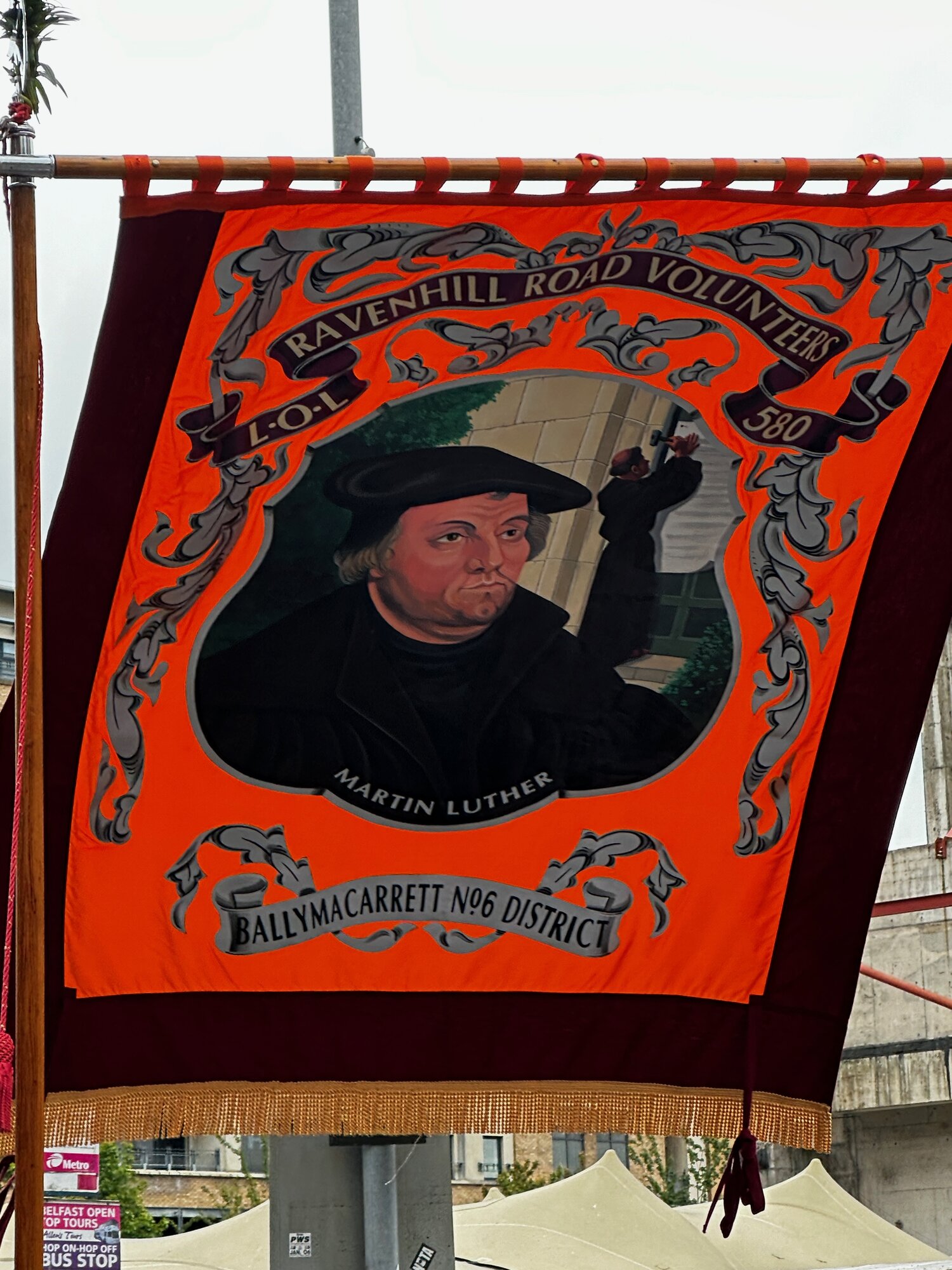
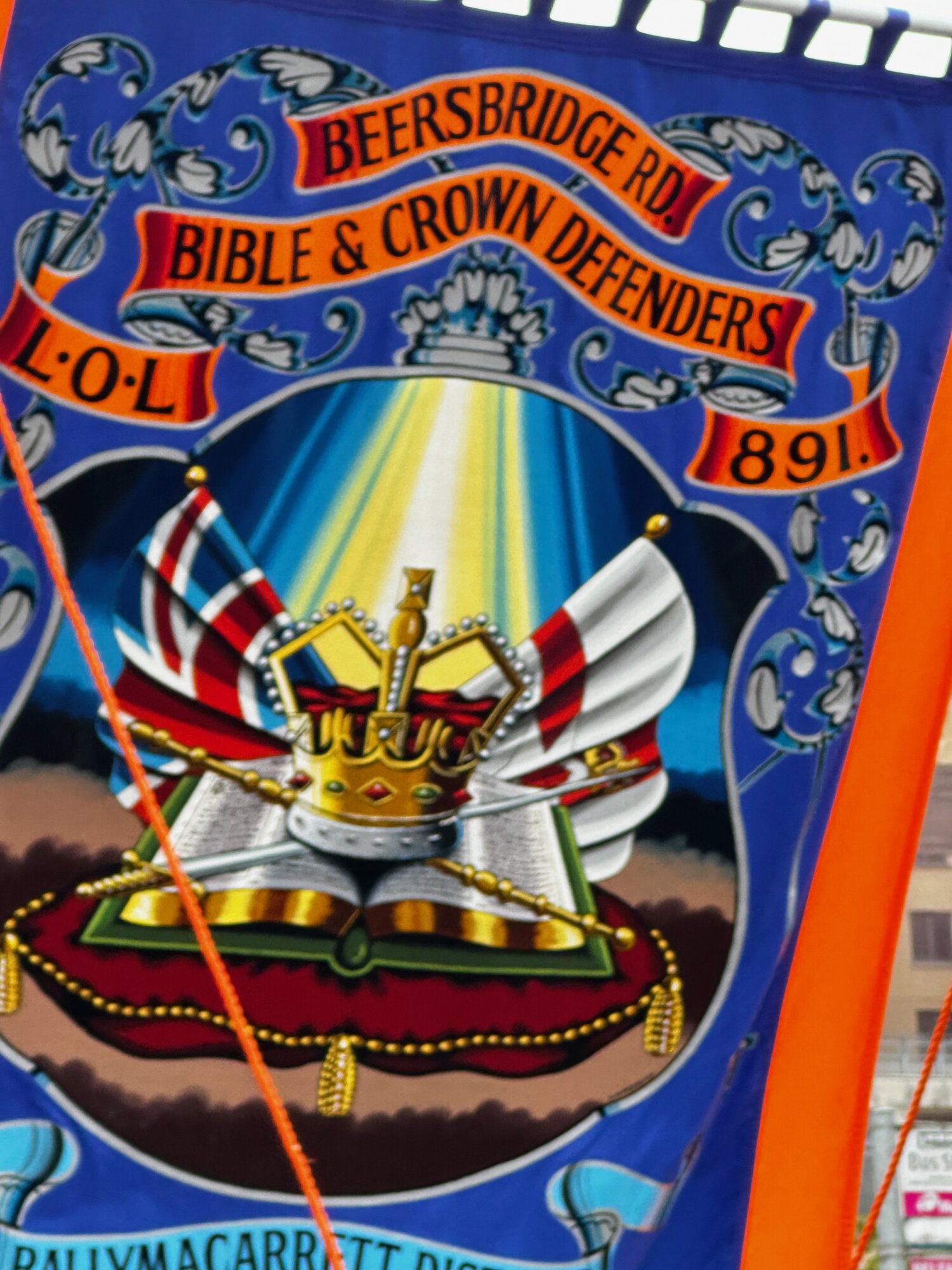 Banners
Banners Drums
Drums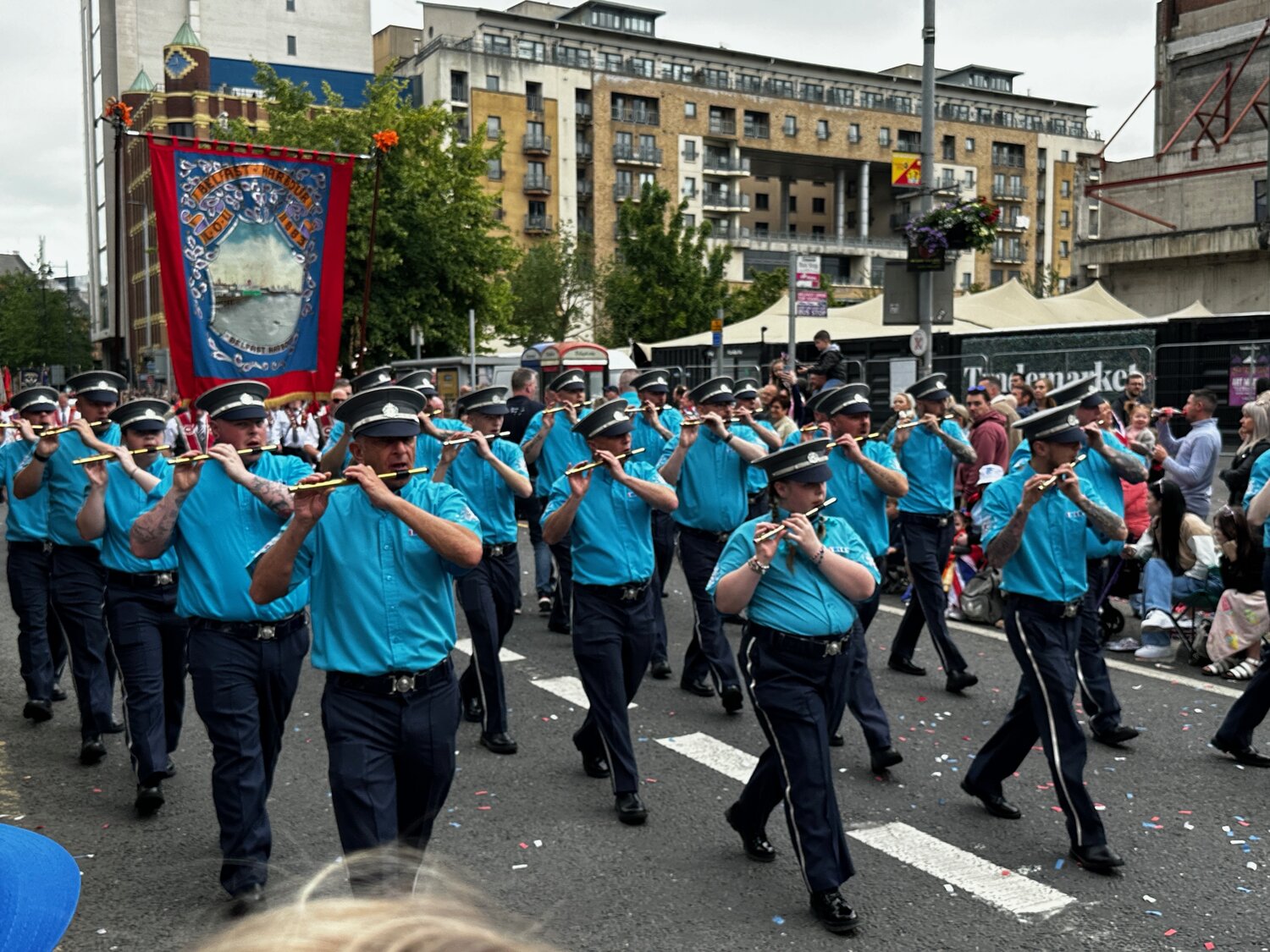 Flutes
Flutes
Band after band. Batons, mace, banner, drums, flutes. Over and over again. No variation (often even playing the same songs). Then the next and the next, each representing a district or community. I was used to the Philadelphia Mummers (non-Philly people: Google the Mummers Parade, it is amazing). There, the idea is to distinguish yourself within categories - you have your Comic, Fancy, Fancy Brigade, and String Bands, and each is trying to outdo the other. The Belfast Parade is about the consistency of ritual. You have to have that, I suppose, when you are still celebrating a victory from over 300 years ago.
But wait, don’t we do the same thing? What makes this different than, for example, Jewish holidays - which I know something about - is that when we celebrate a Jewish victory from a couple thousand years ago the losers are not still with us; we don’t think of modern Egyptians as having lost to us, the Pharaohs are gone. When we celebrate Independence Day in the US, we aren’t lording it over the British of today. But the July 12 parade is different. Waving the British flags, wearing orange, flashing portraits of Queen Victoria and other monarchs, it is a direct challenge to the nationalists of today, not just a nostalgic celebration of yesteryear.
I think of it like dance-offs, or sports competitions. The sides face each other and perform, each trying to out do the other within a set of rules and boundaries, a surrogate form of warfare. If Northern Ireland has somehow found a way to engage in symbolic warfare, using parades as the means to both cement identity and as a form of display for the Other, without violence - well, I suppose it is not perfect, but it sure beats the bombings and deaths of the 30-odd years of “the Troubles”.
We will be diving even deeper into this complex place over the next few days. Stay tuned!



